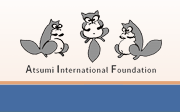Shared Growth Seminar
-
Sustainable Shared Growth Seminar #21
-
SGRA Sustainable Shared Growth Seminar #20 Round Table Summary by Max Maquito
SUMMARY OF ROUND TABLE DISCUSSION FOR SEMINAR #20by Max Maquito Click here for Presentation Slides -
Arch. Mynn Alfonso in SGRA Sustainable Shared Growth Seminar #20
BEYOND THE SPANISH COLONIAL CAPITALISM AND EVANGELISM, TOWARDS VALUING THE LEGACY OF HERITAGE CHURCHES IN THE PHILIPPINES [caption id="attachment_647" align="alignnone" width="300"] Click image to enlarge[/caption] ABSTRACT:400 years ago, the Spanish Conquistadores colonized the Philippines. They played a major role in the development of our towns and cities, through the Laws of the Indies of 1573. These were entre pot for new economic and socio growth but most importantly the spread of Christianity. Today we are the only country where 80% of our 100,000,000 population are Catholics with 300 heritage churches built from 1565 to 1898. This paper is about how the Spanish Colonizers and the Augustinians Missionaries who pioneered the Christian evangelization particularly in Manila, Ilocos Norte and Ilocos Sur in the northwest area of the archipelago of the Luzon island and in Iloilo, in the Visayas, Philippines, transformed the natives into their own image as well as the religion they propagated were as magnanimous as the churches we have in our midst. How the Spanish colonizers respected the environment, provided tangible legacy and landscapes; and how the Filipinos were empowered through evangelism of Christian Faith till this new millennium. Recently, we were immensely blessed by Pope Francis, current Pope of the Catholic Church, with his visit to the country and witnessed by the world. Despite the tropical location of the Philippines that subjects it to seasonal tropical cyclones, earthquakes, volcanic eruptions, and droughts, with frequent disasters due to our geographical location and the effects of global climate change, we remain ever as strong in our faith, hope and love for God Almighty whose will be done to save us, as promised then, now and beyond this millennium. Keywords : Heritage Conservation, Sustainable Development, Roman Catholic Religion. Click here for Presentation Slides Arch. Mynn [email protected] -
Mr. Gerardo Santiago III in SGRA Sustainable Shared Growth Seminar #20
STORM SURGE [caption id="attachment_643" align="alignnone" width="300"] Click image to enlarge[/caption] ABSTRACT: The Philippines is considered as one of the most vulnerable countries to climate change. With impacts including extreme weather events, climate change has been a constant reality that many Filipinos have had to face. Far from being isolated, the recent Philippines typhoon Yolanda followed extraordinary meteorological events that are becoming more frequent and increasingly severe. Storm Surge has greatly affected our fellowmen living in coastal rural poor communities that lack awareness on proper disaster preparedness measures to take as well as in urban areas particularly Manila bay area.How does this storm surge occur? How does climate change affect the occurrence of this storm surge? Understanding this, we become aware of the damaging effects it could incur and be prepared with it . We come up with findings and recommendations on what certain basic measures, design and construction should we take into consideration on building resilient in times of natural disaster. Click here for Presentation Slides Mr. Gerardo Santiago [email protected] -
Mr. Erik Pinaroc in the SGRA Sustainable Shared Growth Seminar #20
HOW CLIMATE CHANGE AFFECTS EARTHQUAKES [caption id="attachment_638" align="alignnone" width="300"] Click image to enlarge[/caption] ABSTRACT:Discusses the 7 steps of how how climate change affects earthquakes, the Bohol earthquake, and prospects of the Big One. Click here for Presentation Slides Mr. Erik [email protected]






